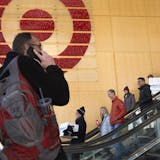For four northwest suburbs, the prospect of heightened housing and commercial development got a potentially big boost this month with the Metropolitan Council's approval of the proposed Bottineau light-rail corridor.
The council's action places the 13-mile Bottineau Transitway in line for possible federal funding, which previously has paid for half of such projects. An environmental review of the corridor will be done this year.
If built, the estimated $1 billion rail line would run from the Target Field Station in Minneapolis out Hwy. 55 to Golden Valley, and north on tracks near West Broadway Avenue through Robbinsdale and Crystal to 73rd Street in Brooklyn Park. There, new tracks would be laid to carry the train north along West Broadway to a terminal just past Hwy. 610.
"Bottineau is key to the region's future development and continued economic success," Met Council Chairwoman Susan Haigh said in a statement after council approval this month.
The light-rail line "will be huge," said Hennepin County Commissioner Mike Opat, whose district includes most of the proposed route. Met Council approval "makes the project much more of a certainty, although we still need work on funding." He noted that cities along the route have approved the light-rail line, which would be expected to start operating after 2020.
'A very big deal'
The 11-station rail line could have a major impact on residential and commercial development in north Minneapolis and the four suburbs along its route. According to U.S. Census data, 14 percent of households in the Bottineau service area do not own a vehicle, nearly double the metropolitan area average of 8 percent.
The train would make stops in several low-income areas in southern Brooklyn Park where people depend on mass transit.
"It is a very big deal for the city in many ways," said Brooklyn Park Mayor Jeff Lunde. "We view this as a ladder for success" for residents who could take the train to work or ride a few stops to North Hennepin Community College or to a stop planned near a county library, he said. "This is about connecting the people in our city who need education, training and jobs."



